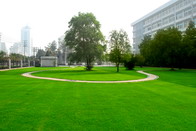Invited by State Key Laboratory of Geodesy and Earth’s Dynamics (SKLGED), professor Philippe Lognonné from Institut de Physique du Globe de Paris visited Institute of Geodesy and Geophysics (IGG) and gave an academic report “Ionospheric seismology: From the remote sensing of tsunamis in Earth atmosphere to Venus perspectives” on January 9.
Ionospheric seismology was at most seen as an exotic way to record doubtful signals. Professor Philippe Lognonné firstly compared and illustrated the different observation techniques with a focus on ground, air-based and space-based GPS measurement and airglow and illustrated the later with data recorded during the Tohoku 2011 and Haida Gwai earthquake and tsunamis. And he discussed the physics enabling the conversion of seismic waves into electron perturbation (for GPS data) and light emission (for airglow). Then, he modeled these signals and discussed the sensitivity of the coupling. These signals could already be used to predict the amplitudes of tsunami at the sea level and a characterization of the seismic source of large earthquake, enabling perspective for the future improvement of tsunami warning systems.
Professor Philippe Lognonné is director of the Planetary Space Science Laboratory at the Institut de Physique du Globe de Paris, as well as Senior Member of the Institut Universitaire de France, also Principal Investigator of the SEIS experiment onboard NASA 2018 InSIght mission and of an Office of Naval Research funded research project for monitoring Tsunamis in the ionosphere.

